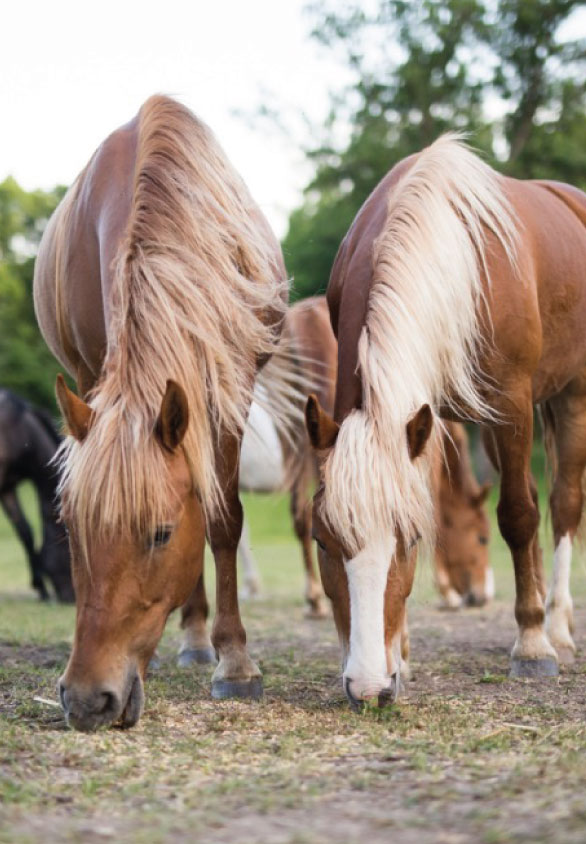Rates of obesity are considered to be as high as 70% in some populations of ponies. Quite simply horses usually get fat because they receive more calories/energy in their diet than they burn through activities such as exercise, keeping warm and just the daily energy required to keep them alive (basal metabolic rate). Excess weight increases the risk of laminitis so it’s crucial to try and keep grass intake under control. The latest research shows that strip grazing could be a useful tool for restricting weight gain.
Comparison of three restricted grazing practices for equine bodyweight management during the UK grass growing season was conducted by Annette Longland in collaboration with Spillers via the Waltham Petcare Science Institute Equine Studies Group which strives to enhance equine health and welfare worldwide.
The study compared three restricted grazing practices for equine bodyweight management during the UK grass growing season. Three groups of four ponies, that had been equally matched for weight, height and secondarily, body condition score, were placed in paddocks with a herbage yield equivalent to 1.5% (dry weight) of the ponies’ body weight per day for 28 days. They were assigned to one of three grazing practices: no other restriction; a lead fence placed across the width of the paddock to allow fresh grass to be accessed each day by moving it 1/28th of the paddock length daily; strip grazed with both a lead and a back fence with the back fence being moved the same distance as the lead fence daily.
The ponies were weighed and body conditions were scored weekly. Bodyweight gains were significantly higher for the ponies without any grazing restriction but there was no significant difference in weight gain for those with the lead fence and those with the lead fence and back fence.
“The ponies with gradual access to pasture via strip grazing had significantly lower body weight gains than their counterparts who were allowed free access to the entire 28-day herbage allocation,” said Clare Barfoot RNutr, Marketing and Research and Development Director at Spillers. “If you are planning on turning your horse out to grass during this current situation or at any other time it’s certainly worth considering installing a strip grazing fence and moving it once a day.”
The next stage of research includes looking at a number of other aspects of strip grazing such as pasture wear and tear and activity levels in order to be able to give further advice as to the choice of strip grazing method.
To help horse owners get through these testing times safely, Clare has put together the following tips:
To help horse owners get through these testing times safely, Clare has put together the following tips:
1. Install a strip grazing system
Smaller paddocks are best to limit grass availability, but the fence should be moved daily
2. Turn out at night
Overnight typically grass will contain less sugar and fructan (Water Soluble Carbohydrate).
3. Beware of restricting time at grass
Ponies, in particular, learn quickly that they need to maximise their time eating and can consume 40% of their daily intake in just 3 hours!
4. Use fewer rugs
Fewer rugs or no rugs at all will encourage a horse to burn off a few extra pounds keeping warm!


5. Try a grazing muzzle
A grazing muzzle can reduce intake by up to 80% but it must be properly fitted, allow for drinking and you must let the horse or pony get used to it before leaving it on for long periods although they should never be left on for 24 hours a day. Continue to monitor bodyweight as some horses and ponies can still gain weight while wearing a grazing muzzle
6. Feed an alternative safe source of forage
For horses and ponies at very high risk consider removing them from pasture altogether and feeding them a suitable forage/ short chopped fibre, preferably one that has been approved by the Laminitis Trust. Spillers™ HAPPY HOOF™ and Spillers™ HAPPY HOOF™ Molasses-Free are now both even lower in starch and sugar and are approved by the Laminitis Trust.
7. Up the exercise
Regular exercise will help keep a horse’s waistline in check and support a healthy metabolism.
For further feeding advice, speak to our in store Equine specialist, click here.









